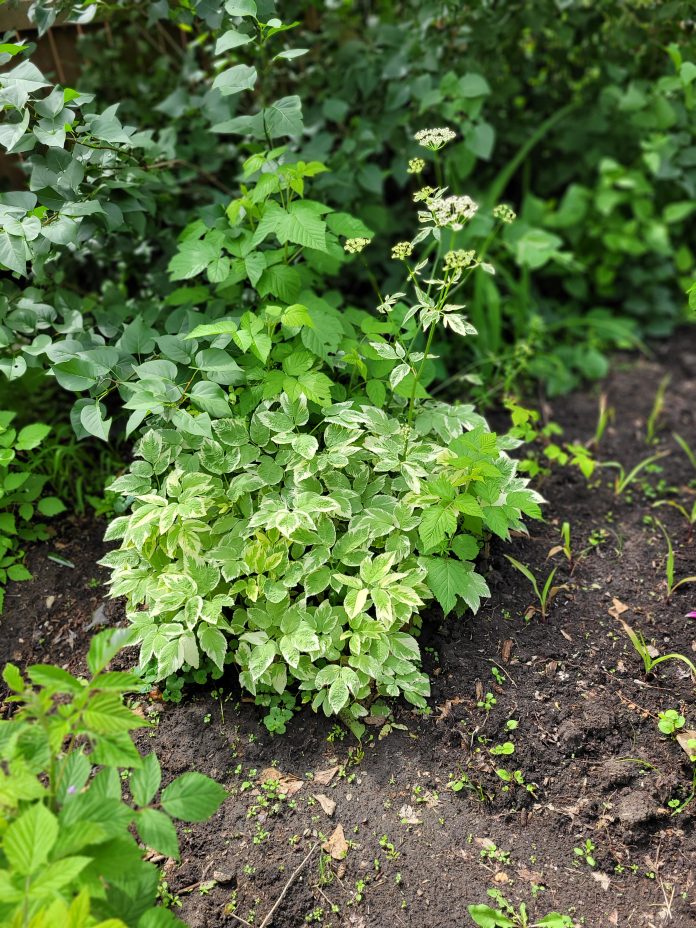
Bernadette Vangool
I realized recently that much of my yard is populated by “aggressive” species such as ferns, lilacs and cornflower, thus adding to the maintenance required to keep everything in check. This was especially true this year, with our adequate rainfall, when even my border perennials appeared more robust and perhaps also “invasive”.
Here are a few aggressives that may even rival the creeping bellflower (Campanula rapunculoides) in some yards.
Lily of the valley (Convallaria majolis), in its preferred habitat of moist well drained soil and partial shade, can be quite a beast, forming dense mats of foliage, which nothing else can penetrate.
Native to the Northern Hemispheres of Asia and Europe, it is very similar to American lily of the valley (Convallaria majolis var. Montana), discovered in 1948, and native to eastern North America. Experts love to debate about this one, as it is very similar and many cannot differentiate between the two species. Each plant has two ovate leaves with pointed tips along a main stem, and grows to about 20 cm in height. The flowers, usually between 8 and 16 dainty white cups nodding on the central stem bloom in May and June. Their fragrance is heavenly and their dainty appearance make them a prominent flower in spring wedding bouquets. A favourite flower of our late Queen Elizabeth II, it is also the national flower of Yugoslavia and of Finland.
Although not on the invasive species list in any of the Canadian Provinces, lily of the valley is on the watch list of Ontario and Prince Edward Island. If allowed to escape into the wild in forested areas, it can spread from underground rhizomes and quickly form thick mats of foliage which can out-competes native flora. At my Dad’s house, lily of the valley provided stiff competition with peonies and other perennials in an east-facing flower bed. There was a constant battle to keep it in check. In my garden, in its optimum location of partial shade, it is surrounded by a concrete path and a driveway, effectively containing it as well as the invasive common tansy (Tanacetum vulgare). I also have lily of the valley growing in deep, dry shade under a tree canopy, where it barely survives.
Next up is goutweed (Aegopodium podagraria),also known by its more exotic common names, snow on the mountain and ground elder. It’s a beautiful plant in the right location and an excellent plant for the beginner gardener or busy folks who have little time to maintain flower beds. It is best used as a ground cover in a garden bed, as it will out-compete all other perennials in sun or shade. As with lily of the valley, it is best contained by hardscaping such as concrete walkway or driveways.
Goutweed is native to the temperate zone of western Asia and mainland Europe. It was introduced to North America, including Canada, by settlers who wished to have familiar plants around them. In Europe, the Romans used to eat the foliage in a spring salad. It is said to become unpalatable after flowering. The monks introduced goutweed to northern Europe as a herb used to treat arthritis and gout, thus the common name.
This herbaceous perennial grows to a height of 1 meter. The variety widely used in the nursery trade has variegated foliage. The flower stems are hollow and sport umbrella shaped flower heads made up of several umbellettes in late spring. These make nice additions to informal flower arrangements, adding an airy whimsical touch. The flowers also attract pollinators to the garden. Once established, goutweed propagates by root rhizomes and forms a dense mass, which supresses weeds and also prevents unwanted tree seedlings from germinating. A low maintenance ground cover for the lazy gardener, once established it might also be a challenge to eradicate. Unlike the purple bell flower, these can be suppressed by smothering them with dark plastic covered with mulch for one season; or by “solarizing” in sunny locations by covering it with clear plastic for six weeks. In both cases, it is suggested you run over the foliage with a lawnmower prior to covering them with plastic.This column is provided courtesy of the Saskatchewan Perennial Society (SPS; saskperennial@hotmail.com ). Check our website (www.saskperennial.ca) or Facebook page (www.facebook.com/saskperennial) for a list of upcoming gardening events.

